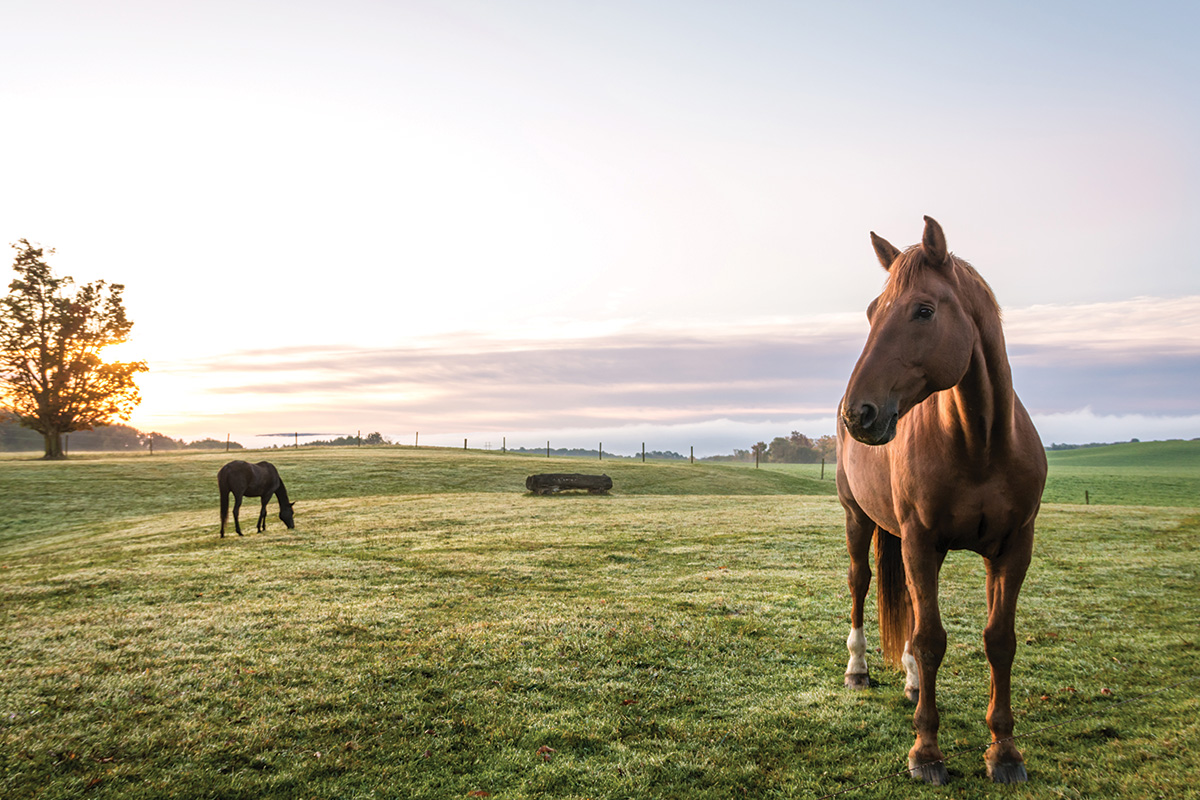[ad_1]

“Happiness — it’s something that we see in horses,” says Esther Kuhlmann of Northland Equine Lessons and Training near Kansas City, Mo. “When you work with horses, they speak to you and tell you how they’re feeling. They get a different gleam in their eyes; it’s something that you learn over time.”
Bucking, kicking out, or putting their ears back are all signs of displeasure in horses. Kuhlmann also says to watch facial expressions, such as tension in the nostrils, ears and eyes.
“Those signs of distress and displeasure are very reliable, but when we don’t see these indicators of unhappiness, don’t quickly assume that a horse is happy,” says Robin Foster, Ph.D., CAAB, certified equine behaviorist and university professor. “Historically, there has been emphasis on the absence of indicators of unhappiness or distress, with a focus on assuming that if the horse is not showing distress or displeasure, he must be happy. Now, there is increasing interest in looking for signs of happiness in horses.”
She further explains the change in research focus.
“Current research and theoretical interest is shifting away from, ‘If it’s not bad welfare, it’s good enough,’” says Foster. “We’re not looking at it that way anymore. For example, we know that a shut-down horse could be very stressed and not showing any behavioral or body language indicators of stress. Currently, we’re looking for behaviors and body language signals that indicate a horse is relaxed and content.” This means a happier horse overall.
Visible signs of relaxation and contentment are easily recognizable and may include:
◆ A horse that is attentive to and engaged with their environment.
◆ A soft, round eye with regular blinking.
◆ Slightly lowered and more relaxed head position.
◆ Posture that may not be perfectly square; for example, resting a hind foot.
◆ Relaxed and loose bottom lip, possibly displaying a slightly gaping mouth.

What if your horse could be happier? Here are five questions to ask yourself.
1. Unhappiness or health challenge?
When a horse in training becomes noticeably “unhappy,” Kuhlmann says she’ll contact their veterinarian to run a blood panel to ensure the horse is not managing through any pain or health challenges.
“It’s something I do fairly fast,” she says. “They may have a chipped tooth or need body work done from their chiropractor. It doesn’t take much.”
2. Is your horse social?
“If horses don’t have a social life with other horses, and a rich, complex environment, you can bet that affects their overall behavior,” says Foster. “No matter how much you care for your horse, humans have very complex lives with many demands—the horse being only one of many. Your life with your horse is maybe an hour a day. The amount of time a person spends with their horse can be limited, and what does the horse do the remaining 23 hours?”
3. Is he moving freely?
“Horses need the ability to move freely,” says Foster. “Happy horses are free to run, roll, turn wildly, race around and kick up their heels—not just move in a fixed way, such as longeing. All of this can play a role in a horse’s behavior.”

They prioritize turnout at Kuhlmann’s barn.
“We don’t keep horses in stalls 24/7,” she says. “I compare [stabled horses] to prisoners, in that they only get something to eat when given to them or socialization when we say ‘hi’ to them. This is where your cribbing, stress and weaving come from. They are herd animals and grazers, and they move better as their joints keep moving and they are not confined to standing still in a stall. The more turnout, the better for their bodies and minds.”
4. Does your horse enjoy his job?
“We all have our limits in what we can or can’t do,” says Kuhlmann. “When you look for a horse, be mindful that you find one who can do what you want and a partner who will enjoy the discipline they are in. If your horse is tight and angry, he won’t succeed in that sport. If this is your only horse, you need to do what your horse likes to do.”

5. Is it a partnership or a dictatorship?
“Your horse should see you as a partner, not the boss of them,” says Kuhlmann. “Instead of coming in and acting dominant and in charge, it’s more of a partnership. If you don’t treat your partner right, your partner won’t treat you right.”
As much joy as our horses bring to our world, keep these thoughts in mind to bring even more joy to theirs.
This article about horse happiness appeared in the November/December 2022 issue of Horse Illustrated magazine. Click here to subscribe!
[ad_2]
Source link
